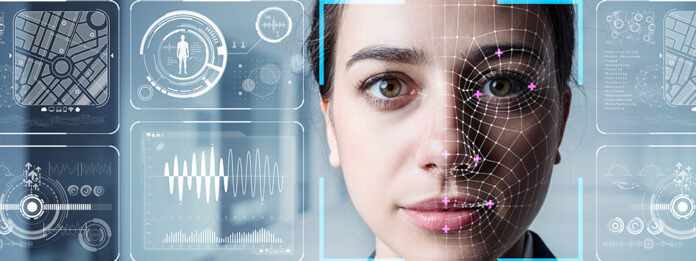The planet is flooded with large data sets today. However, in terms of images and videos, the overabundance of available data allows facial recognition technology to work. The visual data and millions of images and videos created by CCTV cameras installed in modern-day cities are analyzed for security by a facial recognition system.
What is Facial Recognition?
Facial recognition is a technology that, through a picture, video, or other audio-visual devices, can recognize or validate a human face. To identify the facial features of a person, this identification technology leverages biometric software.
In recent times, facial recognition systems have seen broader uses on smartphones and in other fields of technology, such as robotics, although initially a form of computer application. Because computerized facial recognition requires measuring the physiological features of a person, facial recognition systems are known as biometrics.
Although the accuracy of facial recognition systems is lower than iris recognition and fingerprint recognition as biometric technology, because of its contactless operation, it is widely adopted. Advanced human-computer interaction, video surveillance, and automated image indexing have been introduced for facial recognition systems.
Applications of Facial Recognition
Today, to make the planet safer, smarter, and more convenient, facial recognition is being used.
- Airports: Airport authorities use facial recognition for international flights at security check-ins.
- Payment Methods: The system of facial recognition has become important in payments, allowing contactless payment methods by scanning the biometric features of a person.
- Healthcare: Facial recognition assists in the process of patient check-in, real-time detection of feelings, patient monitoring, diagnosis of certain illnesses or disorders, identification of workers, and protection of facilities.
- Retail: Facial recognition helps to customize the shopping experience in the retail sector, eliminates shoplifting, encourages employees to provide better customer service, and enhances retail store security.
- Education: By allowing institutions to track student attendance and behavior, a facial recognition system will enhance the student experience. It can strengthen learning dedication and security.
Who are the frontrunners?
- Major tech companies across the globe are developing advanced technologies for facial recognition. In particular, technological giants are leading the way in the US, Russia, China, Japan, Israel, and Europe.
- China has installed millions of cameras that are linked to software for facial recognition in the region.
- Russia has announced that its surveillance network will be extended.
- Facial recognition has made its way into shops to detect criminals and into companies to track workers and tourists in Europe and other developed nations.
- Police officials in the US use the app to scan criminals for CCTV video.
Follow and connect with us on Facebook, Linkedin & Twitter

